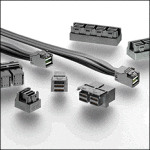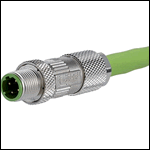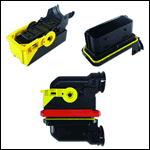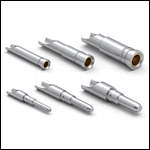Safe Fiber Optic Splicing Techniques
Cable splices are a necessary evil in designing and installing a communications network, particularly in an industrial setting, so let’s take a look at safe fiber optic splicing techniques.
In a perfect world, a fiber optic installation would consist of long, continuous cable runs from one destination to another. However, in the real world – out in the field – fiber optic splices are inherently necessary when designing and maintaining a reliable communications network.
Splice Types
The two most common methods of fiber optic splicing are mechanical and fusion. In mechanical splicing, the optical fiber cores are aligned and then joined within a precision, sleeve-like assembly to allow the optical light to pass from one fiber to the other. Fusion splicing requires a special machine to weld the optical fibers together via an electronic arc. Compared to mechanical splices, it provides a more permanent junction. The splice type is typically determined by performance, economics, and the fiber construction. Mechanical splices can be performed on both single and multimode fiber, and fusion splices are appropriate for single mode fiber.
Safety Concerns
Regardless of the splice you choose, fiber optics present several safety concerns. Let’s discuss some of the safety considerations technicians and installers should remember when working with fiber optic cables:
Watch for Strays
When splicing, the cable’s outer protective layer is stripped away, and the cable gets cleaved. As a result, stray fiber scraps can lead to several safety problems, including penetration of the skin that results in infection or internal injury. Therefore, a clean work area is extremely important. While some scraps may be too small to see, a dark work surface or colored mat will help make more of the glass shards visible. Pass electric tape or double-sided tape over the work area to collect the scraps. Then, deposit the scraps into a fiber optic scrap disposal unit for removal.
Besides skin penetration, scraps can also be ingested or get into the eye. Therefore, do not keep any food or drinks near the work area, and be sure to wear safety glasses with side shields.
Always assume that all fibers are active, and never look into the end of a live fiber connector. Infrared light will not be visible, so be sure to keep the end of the fiber pointed away from you and take extra care when working with a cleaved end. Infrared detection cards can help make the infrared light visible, but their effectiveness varies in certain types of light. A fiber optic power meter can determine whether the fiber is dark.
Clear the Air
Remember that fusion splices use an electric arc to join two fibers, so the workspace should be free of flammable gasses. If space is confined, move your fusion splicing outside to an environment where gases easily disperse. Never splice inside a manhole. Instead, do your splicing inside a “splicing trailer.” These vehicles are marketed as clean room-type environments, and they can be customized for functionality and comfort. Curing ovens also present a hazard when combustible materials are nearby.
Other more general safety measures include being aware of any live electrical wires in the area – both to avoid direct contact and to make sure your fiber optic hardware isn’t conducting any electricity – and always work in a well-ventilated area since chemicals are usually present during splicing. Finally, it is never a good idea to smoke while splicing fiber optics.
As always, review these techniques with your own engineering staff or outside consultants to be sure you are adhering to best practices for your particular situation. You can find more safety information, including some of the tips mentioned here, at the Fiber Optic Association’s website along with a free, downloadable safety poster.
Chris Warner is a freelance technology writer who comes from an old Western Electric family. He has more than 15 years experience in covering the electronic components industry.





